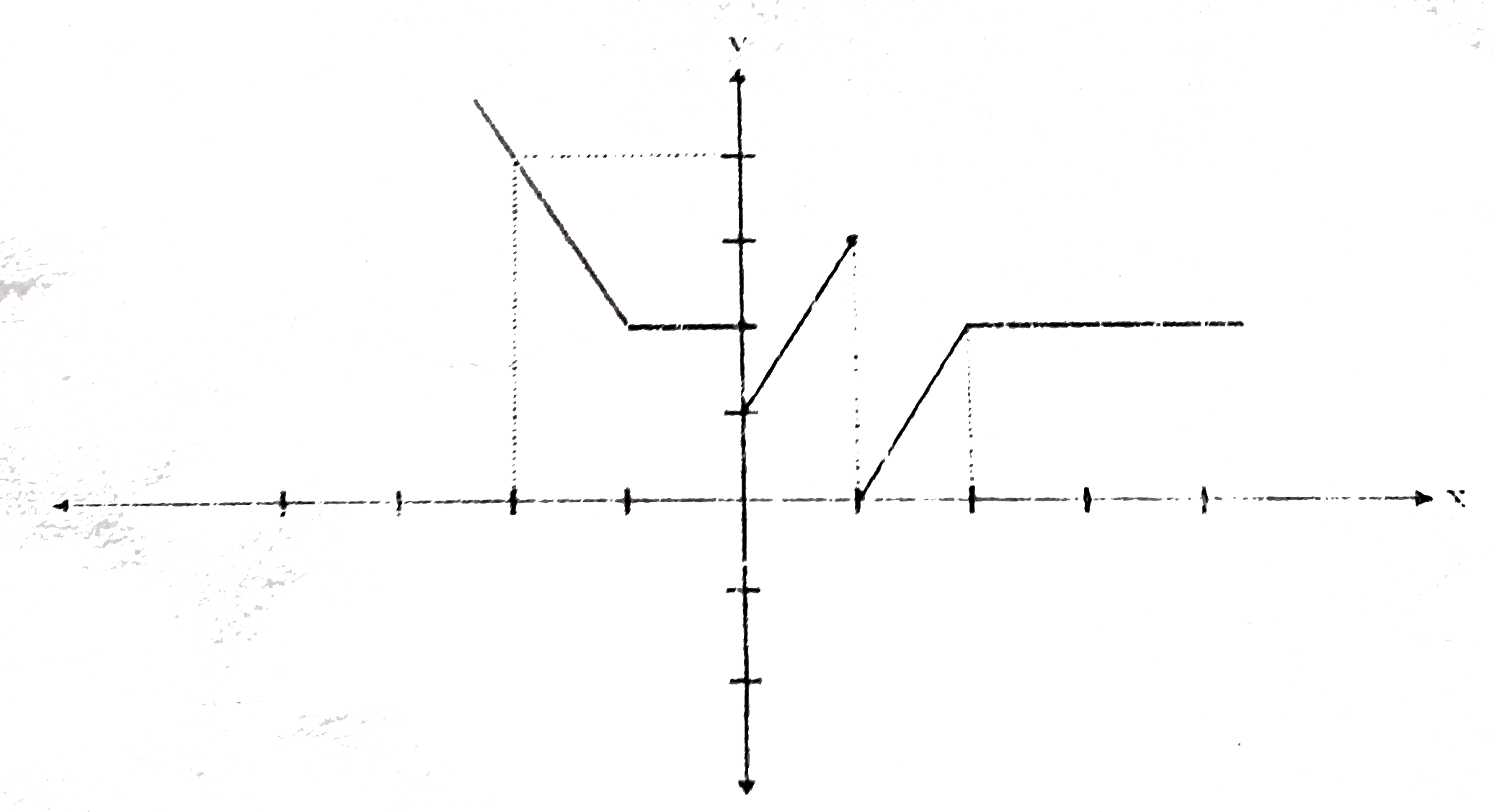Let F and G be two real-valued function defined on R (the set of all real numbers)
F(x)={|x+1|x{:(,xle0,),(,xgt0,):}G(x)={|x|+1−∣x−2{:(,xle1,),(,xgt1,):}andH(x)=F(x)+G(x).<br>Thevalueofdef∈ite∫egralint_(-2)^(2) H(x) dx is equal to
A
4
B
7
C
8
D
12
Video Solution
Text Solution
The correct Answer is:C
We have, F(x)=⎧⎪⎨⎪⎩−(x+1)(x+1)(x)x<−1−1≤x≤0x>0
and G(x)=⎧⎪
⎪
⎪
⎪⎨⎪
⎪
⎪
⎪⎩−x+1x+1x−22−x−∞<x≤00<x≤11<x<2x≥2
H(x)=F(x)+G(x)=⎧⎪
⎪
⎪
⎪
⎪
⎪
⎪⎨⎪
⎪
⎪
⎪
⎪
⎪
⎪⎩−(x−1−x+1=−2x)(x+1)−x+1=2x+(x+1)=2x+1x+(x−2)=2x−2x+2−x=2−∞<x≤−1−1≤x≤00≤x≤11<x<2x≥2
 Graph of H(x)
Graph of H(x)
Clearly from the graph, H(x) is discontinous at
x=0 and x=1, i.e., 2 points of discontinuity
∴A&B
Graphically,
Area under curve from −2→2
=(12×2×1×1)+(2+1)+(12×2×1×1)+(12×2×1)
=(1+2)+2+(1+1)+1
=3+2+2+1=8
|
Topper's Solved these Questions
- TEST PAPERSBOOK - ALLENCHAPTER - TEST PAPERSEXERCISE - MATHEMATICS
51 Videos
- TEST PAPERSBOOK - ALLENCHAPTER - TEST PAPERSEXERCISE - CHEMISTRY
1 Video
- TEST PAPERSBOOK - ALLENCHAPTER - TEST PAPERSEXERCISE - part-2 Mathematic
18 Videos
- TEST PAPERBOOK - ALLENCHAPTER - TEST PAPEREXERCISE - CHEMISTRY SECTION-II
8 Videos
- VECTOR ALGEBRABOOK - ALLENCHAPTER - VECTOR ALGEBRAEXERCISE - All Questions
1 Video
Similar Questions
Knowledge Check
Let F and G be two real-valued function defined on R (the set of all real numbers)
F(x)={|x+1|x{:(,xle0,),(,xgt0,):}G(x)={:{(,|x|+1,),(,-|x-2,):}x≤1x>1 and H(x)=F(x)+G(x).
Point of discontinuity of H(x) areAx=0Bx=1Cx=2Dx=−1If f(x)=2−xcosx2+xcosxandg(x)=logex,(x>0) then the value of the integral ∫π/4−π/4g(f(x)) dx is
Aloge3BlogeeCloge2Dloge1A function is defined as f(x)={ex,x≤0|x−1|,x>0, then f(x) is
Af(x) is differentiable at x=0Bf(x) is continuous at x = 0 ,1Cf(x) is differentiable at x=1DNone of the above
Let f(x)={x2−1,x≤1−x2−1,x>1.Findlimx→1f(x).
View SolutionIf f(x)={x2x≤0xx>0 and g(x)=−|x|,x∈R, then find fog and gof.
View SolutionIf f(x)={x2x≤11−xx>1 & composite function h(x)=|f(x)|+f(x+2), then
View SolutionLet f(x),g(x) be two real valued functions then the function h(x)=2max{f(x)−g(x),0} is equal to :
View SolutionLet fandg be differrntiable functions on R (the set of all real numbers) such that g(1)=2=g'(1)andf'(0)=4.Ifh(x)=f(2xg(x)+cosπx−3) then h'(1) is equal to:
View Solution